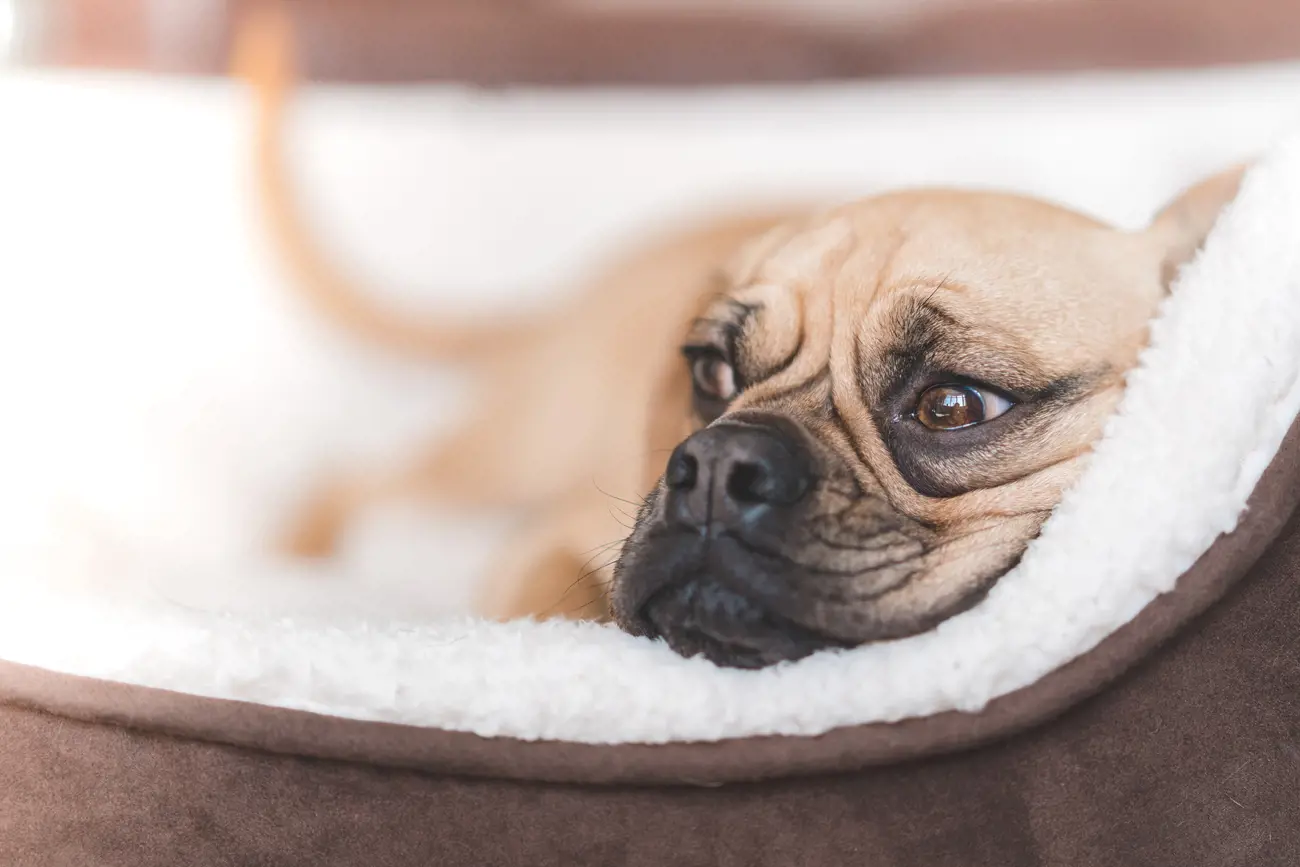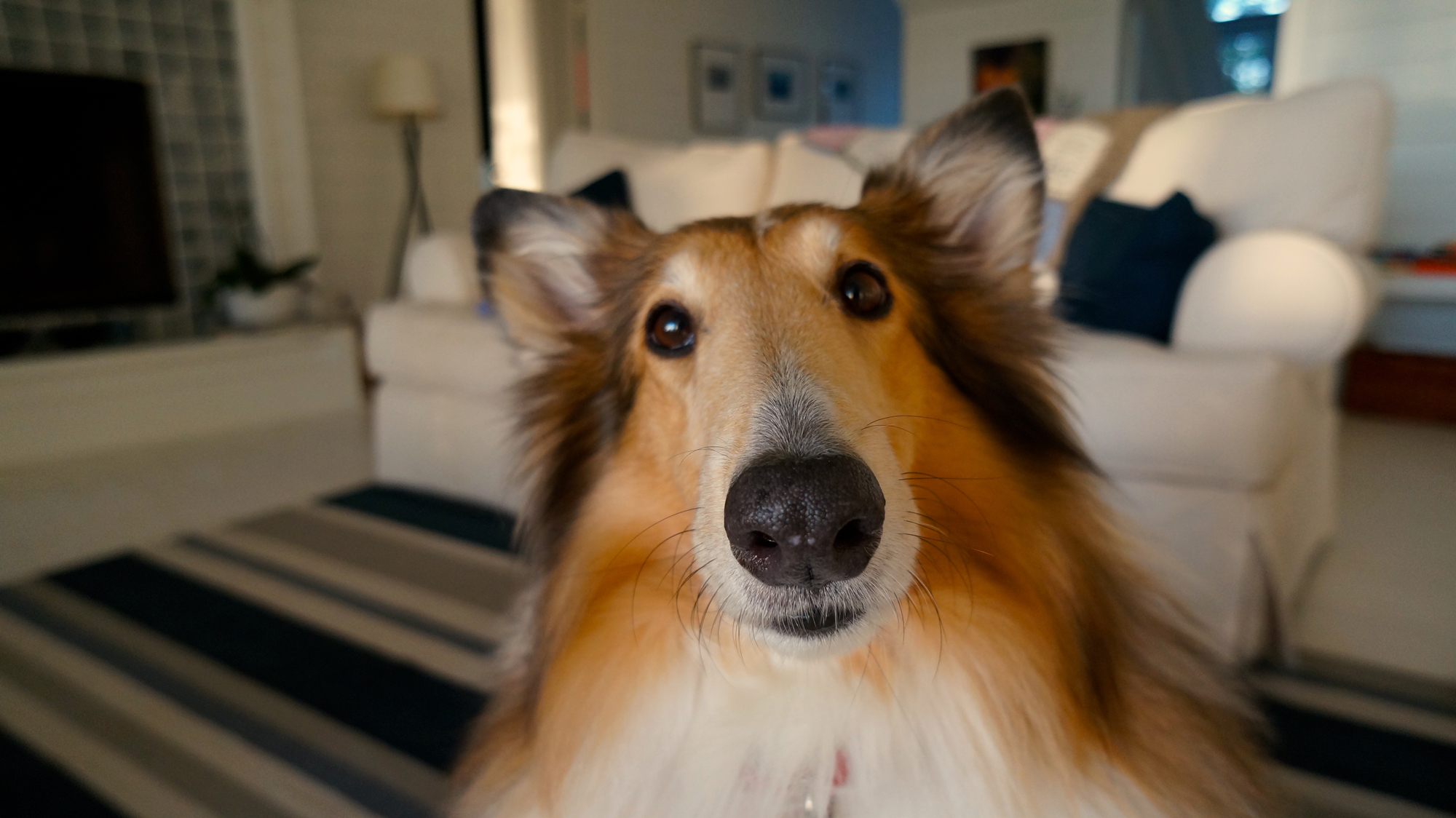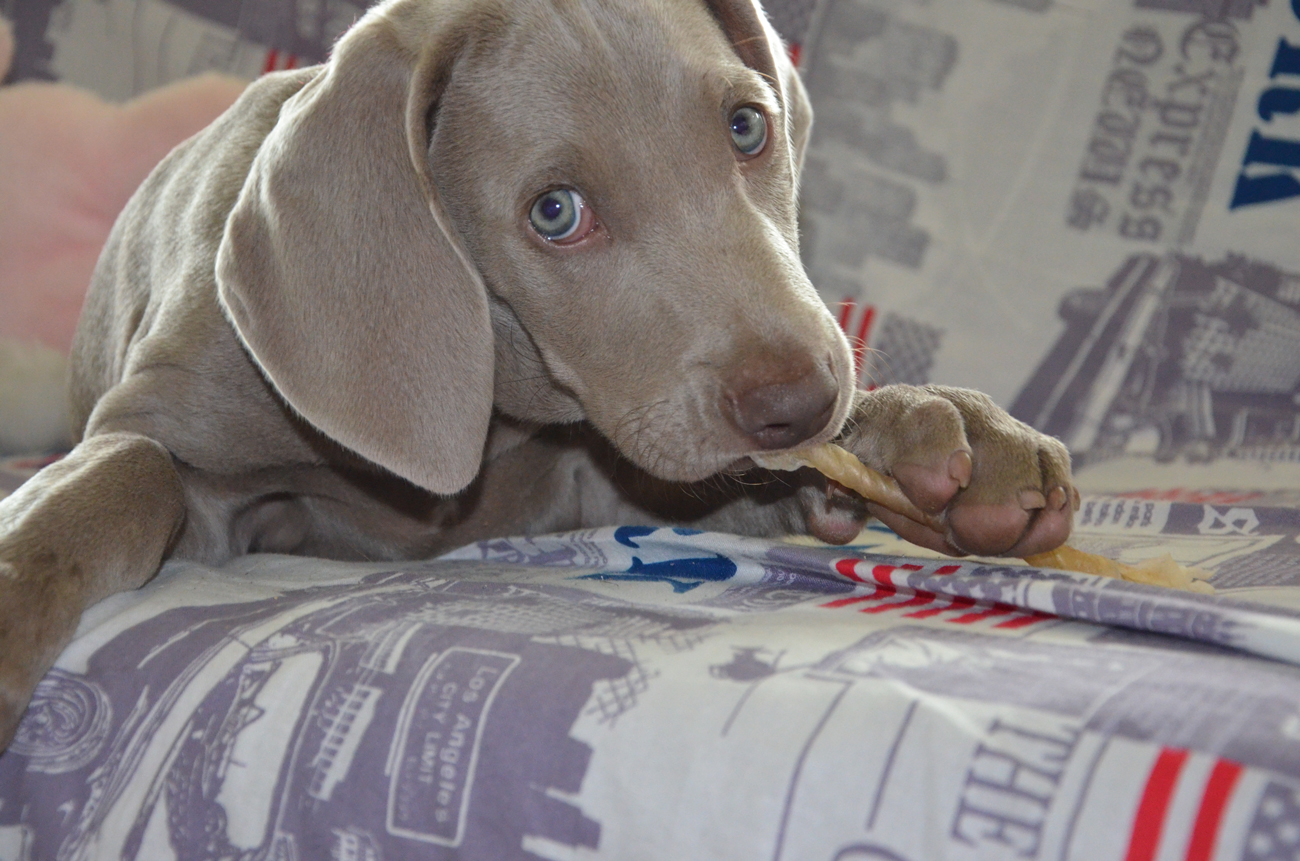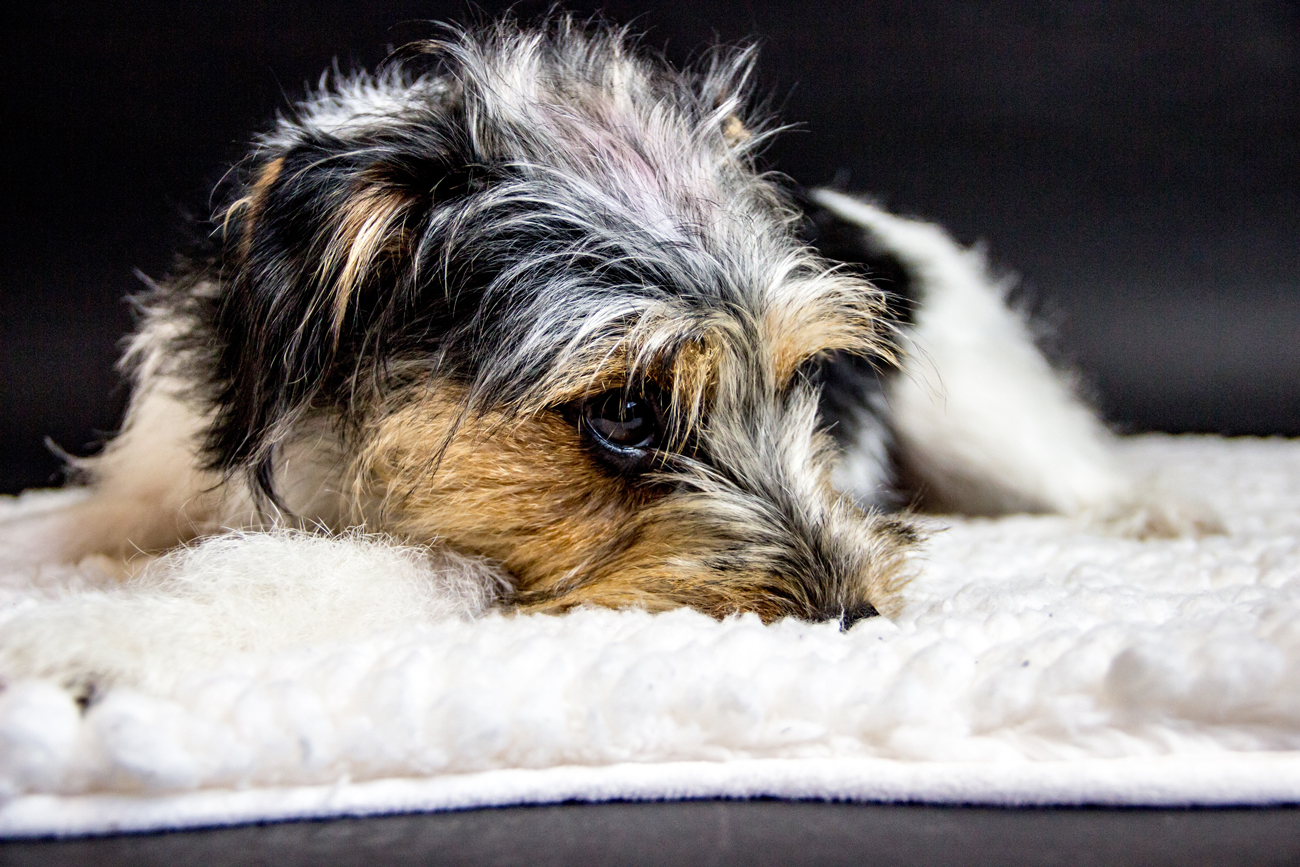How to cope with separation anxiety in dogs
6th July, 2021

Heading back into the office after months of working from home? Or want to start leaving your puppy alone for longer periods? Then you might well need to help your pup overcome separation anxiety.
Many devoted dogs can’t bear it when their owners are absent – they’re not known as man or woman’s best friend for nothing!
At Purely Pets, we’re specialists in helping you keep your animal happy and healthy with our award-winning dog insurance.
Read on for our guide to separation anxiety, including a five-step plan to prepare your dog to be left alone, plus 11 top tips for helping your pet overcome the problem.
What is separation anxiety?
In the wild, dogs are pack animals. They’re meant to follow their leader, not fend for themselves – there’s safety in numbers.
As domesticated pets, dogs form a similar bond with their owners. Your pet’s natural instinct is to be with you at all times, being protected from predators or other dangers – and doing the same for you in return.
The RSPCA says that eight out of 10 dogs find it hard to cope when left alone, though around half don’t show obvious signs.
But with the right training, dogs can learn that they have nothing to fear when you’re not there, and that you will return in due course.
Of course, separation isn’t the only thing that makes dogs anxious. Read our blog on anxiety in dogs to discover more about other causes, and what you can do to help.

Signs of separation anxiety in dogs
It can be tricky to spot that your dog is suffering separation anxiety. The signs might stop as soon as you return, or they might be only subtle. So what should you look out for?
Often, your dog makes it absolutely clear that it’s not happy to be left on its own. You don’t need to be a canine behaviour expert to recognise that a dog that starts howling as you walk out the door is suffering from separation anxiety.
The people living next door might well let you know, too! If your dog rarely barks when you’re around, you might think your neighbours are exaggerating – but lonely pets really can howl for hours while you’re gone, then quieten down the instant you return.
Destructive behaviour is another clue. So if your home looks pristine when you leave it, and like a bomb site when you return, then chances are that the cause is an unhappy dog. It’s likely to target the door you left by, so check for claw and teeth marks.
A further sign is if your dog has gone to the toilet where it shouldn’t, or even vomited.
It can even start harming itself. Insurance for dogs can help cover the cost of vets’ fees for any injuries, but obviously you’ll need to prevent repeat occurrences.
You should also be alert to more easily overlooked signs of an anxious or lonely pooch. It might be trembling or whining when you return, or pacing up and down.
Or perhaps it’s displaying repetitive behaviour? This is a sign that it’s trying to soothe itself.
If you’re unsure, try setting up a video camera, security camera or even just a smartphone to capture your dog’s behaviour while you’re out.
Training your dog to be left alone
Ideally, you’ll take action to prevent your dog developing separation anxiety in the first place.
It’s often a reaction to a sudden change in circumstances, so the key is to introduce your dog gradually to the experience of being left alone. It’s best to do this when your pup is an adolescent – between about six and 18 months of age.
Soon, it will learn that you haven’t abandoned it forever and that you will return! Then you can start leaving your dog for longer periods.
The RSPCA has come up with a five-step plan to leaving your dog alone for the first time.
-
Encourage your dog to go to bed and stay there with you present. Reward it with a treat for remaining calmly in its bed for a short while.
-
Tell your dog to stay, then move away. Come back, and give it a reward.
-
Repeat step 2 several times, moving further away and staying away for longer periods each time. You’ll need to play it by ear: if your dog starts getting agitated, return and reassure it. Pushing things at this stage can just make the situation worse. You could even repeat the previous stage until your dog seems calmer.
-
Start leaving the room before returning. Once your dog is ok with that, go out and shut the door behind you. Repeat this process, staying outside for longer each time. Then start to vary the length of time before you return.
-
Is your dog ok to be left for an hour? Then it should be fine to leave it for longer periods. It knows you’re coming back, and will be comfortable with its own company until that point. Congratulations to you and your pooch!

Treating your dog’s separation anxiety
While the above steps should help you train a dog that hasn’t been left alone before, what about a pooch who’s already developed separation anxiety?
Helping your hound overcome this fear is harder – but still doable. Here are some top tips for action you can take to calm your canine and help it grow comfortable with its own company.
Plus, if your pet is generally nervous, not just when it’s apart from you, read our earlier blog on helping anxious pets.
-
Never punish your dog
If you return to a howling hound and torn-up mail, you might well feel tempted to punish your animal. But try to see things from its point of view: it’s spent several distressing hours thinking you’ve abandoned it, and now you’re back and you’re angry. That’s just going to confuse a poor pooch and worsen its anxiety.
Instead, give your dog plenty of reassurance, and let it outside while you clear up. Start planning how you’ll deal with your dog’s anxiety – read on for our tips.
- Leave your dog in a safe and pleasant environment
Your dog should be left with access to a comfortable place to snooze and its water bowl. If you’re confining them to one area of your house, make sure there’s a shady corner on hot days.
You mustn’t crate your dog for hours on end, though many dogs do like crates that are left open as a comfy den area where they feel secure.
Some owners whose dogs get destructive choose to leave them in the garden instead. This is not fair on either your pet, who needs shelter, or your neighbours, whose patience with your barking dog may quickly wear thin!
-
Feed and exercise your dog before you leave
If at all possible, take your dog out for a quick walk or run before you leave the house.
When the two of you get back from your excursion, give your dog a meal or a treat. That increases the likelihood of it relaxing when you leave, and staying happy while you’re gone.
-
Minimise the time you leave them
Most experts recommend that adult dogs are left alone for no more than four hours, and puppies even less. Any longer, and you risk returning to a whimpering pooch, chewed-up cushions, and irate neighbours!
So if you’re out at work all day, you need to find a solution that’s right for your dog.
-
Arrange a dog sitter or walker
Perhaps you’ve got a willing neighbour, friend or relative who can pop in from time to time while you are out and give your dog some TLC?
There are also online services which match dog owners with volunteers who love dogs, but can’t keep one themselves. Maybe you’ll find a willing sitter this way?
If not, you’ll need to pay a professional. A dog sitter can visit your home while you’re out, make a fuss of your animal, and alert you if there are any problems.
A walker might be an even better solution: exercise can relieve your animal’s stress and tire it out so it snoozes happily in its basket until you return.
-
Leave a radio on
Some dogs relax better when they can hear human voices. So try leaving your radio on, tuned to a talk radio station.
It also acts as white noise, helping to drown out any alarming noises from the street outside.
-
Minimise disturbances
Similarly, by drawing curtains or putting your dog in a quiet room, you can help reduce any startling sights or noises from outside. Your dog should hopefully curl up calmly, dozing until you return.
-
Leave it with a special item
Just like small children, dogs often develop attachments to certain objects, such as squeaky toys or blankets. They find the presence of these items comforting, and panic when they’re removed.
So if your dog has a favourite item, make sure it’s available while you’re out. It could be the key to a mellow mutt!
-
Leave it with puzzle toys
One of the biggest drivers of destructive behaviour in dogs is boredom. If your mutt is cooped up all day, it is likely to entertain itself – and let you know about its frustration – by tearing up your favourite rug or chewing your newest pair of shoes.
What your dog needs is mental stimulation. Puzzle toys are ideal: place treats inside, and leave your dog to work out how to extract them. Hours of entertainment are pretty much guaranteed!
Use these toys only when you’re going out, and replace them from time to time. Otherwise, your pet will grow bored of them, defeating the point.
-
Make a fuss when you return
Back from work? What better way to unwind than by reconnecting with your beloved pet! Whether you snuggle up on the sofa for a good cuddle, get out the brush for a grooming session, or go for a walk together, you and your pet will both benefit.
-
Get professional support
Still stuck at home with your anxious dog? Or returning after doing the weekly shop to find your sofa clawed to shreds? It’s time to turn to the experts.
Your vet can give you basic advice, and examine your pet to make sure there are no underlying health conditions that are aggravating its anxiety.
They can also refer you to a canine behaviour expert, who will work with you and your pet on building up its confidence.
If you’ve got insurance for a dog with Purely Pets, you can also phone our 24-hour vet helpline to talk things through and seek further advice.

Which breeds are best on their own?
Each dog is an individual, with its own character and temperament. And factors such as age and health are also important. But some breeds of dog are certainly known to be more prone to separation anxiety than others.
So if you are picking a pup that you know will need to be left alone from time to time, which breeds might suit you best?
Labradoodles, shar peis, and dogues de Bordeaux generally tolerate being alone for a while, and golden retrievers tend to adapt too.
Meanwhile, many working breeds suffer from boredom when left alone, so might well become destructive.
Whichever animal you choose, make sure it’s in good health, and protect it with suitable dog insurance.
Get a quote from Purely Pets today
At Purely Pets, we know how much owners love their dogs – even if they can’t be with them every minute of every day!
We’ve put together 15 levels of lifetime dog insurance to help protect your dog, including cover for vets’ fees of up to £15,000, depending on your policy.
Other cover benefits could include special diets, complementary treatments, and loss by theft or straying. Third party liability is included, too.
You can manage your policy and make claims online – perfect for working or busy dog owners.
Get a quick quote for dog insurance today.
Policy benefits, features and discounts offered may very between insurance schemes or cover selected and are subject to underwriting criteria. Information contained within this article is accurate at the time of publishing but may be subject to change.
Helpful Pages
Recent Posts
Pet Insurance Quote
- 98% claims paid *
- Claims paid directly to vets
- 24/7 vet video consultations
- Interest free monthly payments




